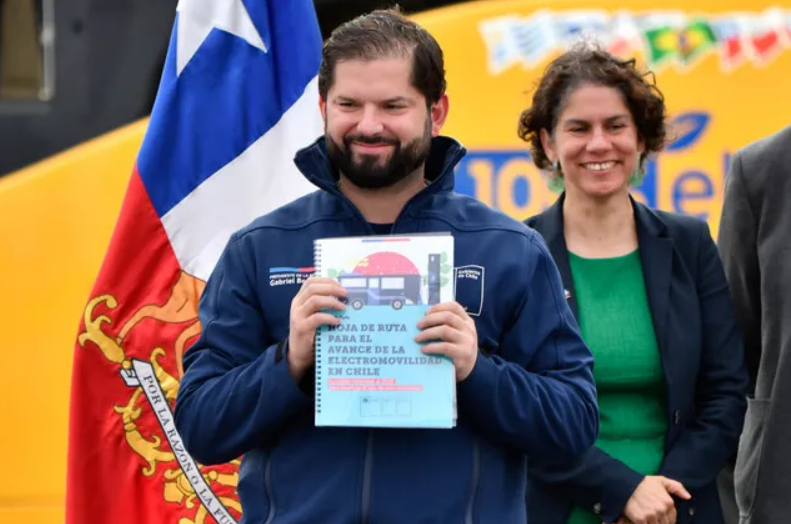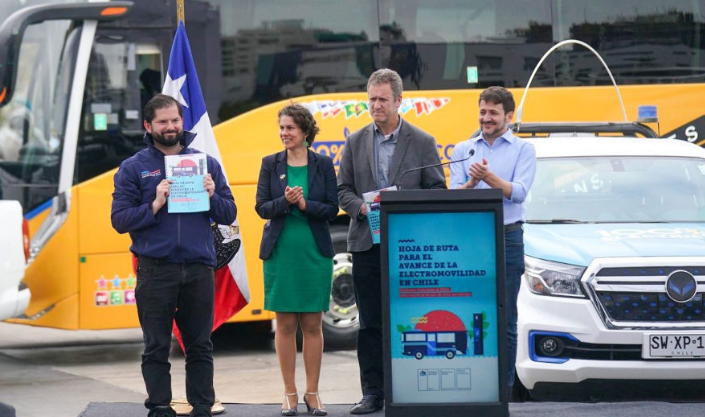The President of Chile, Gabriel Boric, recently presented the “Electromobility Roadmap“, a document that contains the South American country’s concrete proposals for the year 2026 to massify the use of electric mobility in the short and medium term.
According to a report by the Xinhua news agency, Chile’s Minister of Energy, Diego Pardow, explained that the program is key to the advancement of electromobility and has among its main axes the promotion of public transport and charging infrastructure for companies to migrate towards this technology.
“Transitioning to electromobility not only means less emissions, but it also means that SMEs have much greater control over their costs,” he said.
“Once we are up to speed with those challenges, we will move on to the next one. The path to carbon neutrality requires many steps. These are the first,” the energy minister added.

Focus on Transportation
For his part, the Chilean Minister of Transport and Telecommunications, Juan Carlos Muñoz, stressed the importance of the document in meeting the goals and emphasized that the transport sector is key to achieving the targets.
“Climate change is a challenge that has to do with the future and with new generations. And electromobility is a forceful response from the transport sector, whose emissions reach 25 percent of the total,” he said.
Read also: Andes Motor and Foton Introduce Electric Vehicle Training Initiative
Muñoz stressed that Chile “is launched” towards the goal of being carbon neutral by 2050 and, in that sense, objectives have also been proposed in transportation.
“We want only zero-emission vehicles to be sold in our country by 2035. 2035 is just around the corner. And by 2040 we want all bus transport to be zero emissions. Today we are being looked at from other countries regarding how we have advanced in electromobility,” he explained.
The Electromobility Roadmap includes vital aspects such as freight infrastructure; public transport and decentralization; education and training; road safety and regulation.




